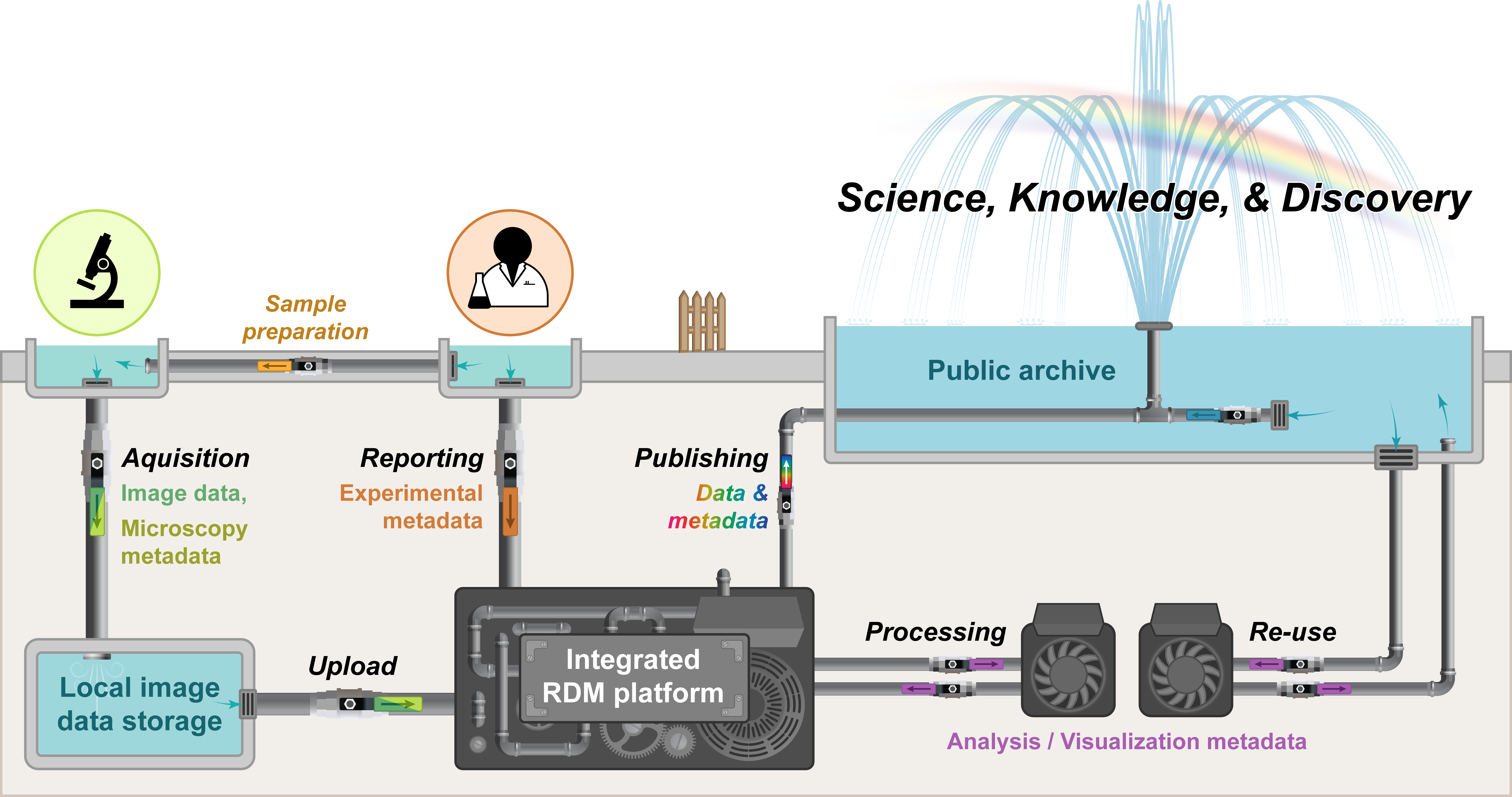Research Data Management and Sharing for images: beautiful fountains require ugly piping!

The consensus is clear: research data funded by public resources should be shared. Globally, the advantages of sharing research data are widely recognized. It promotes transparency and validation, reduces redundant efforts, accelerates discovery, enhances equity, and increases the impact of research through collaboration and efficient use of resources.
Image data, however, presents unique challenges. Advanced technologies produce large, multimodal, and multiplexed datasets that span multiple targets across various spatiotemporal scales.
Image data comes from various sources—such as optical, electron microscopy, and medical imaging—each with specific technical requirements. Managing this complexity is a daunting task without global metadata standardization as well as robust Research Data Management and Sharing (RDMS) cyberinfrastructure to bring it all together.
